50 Years of Earth Day: How America Led, Lost and Hopes to Reclaim the Environmental Movement
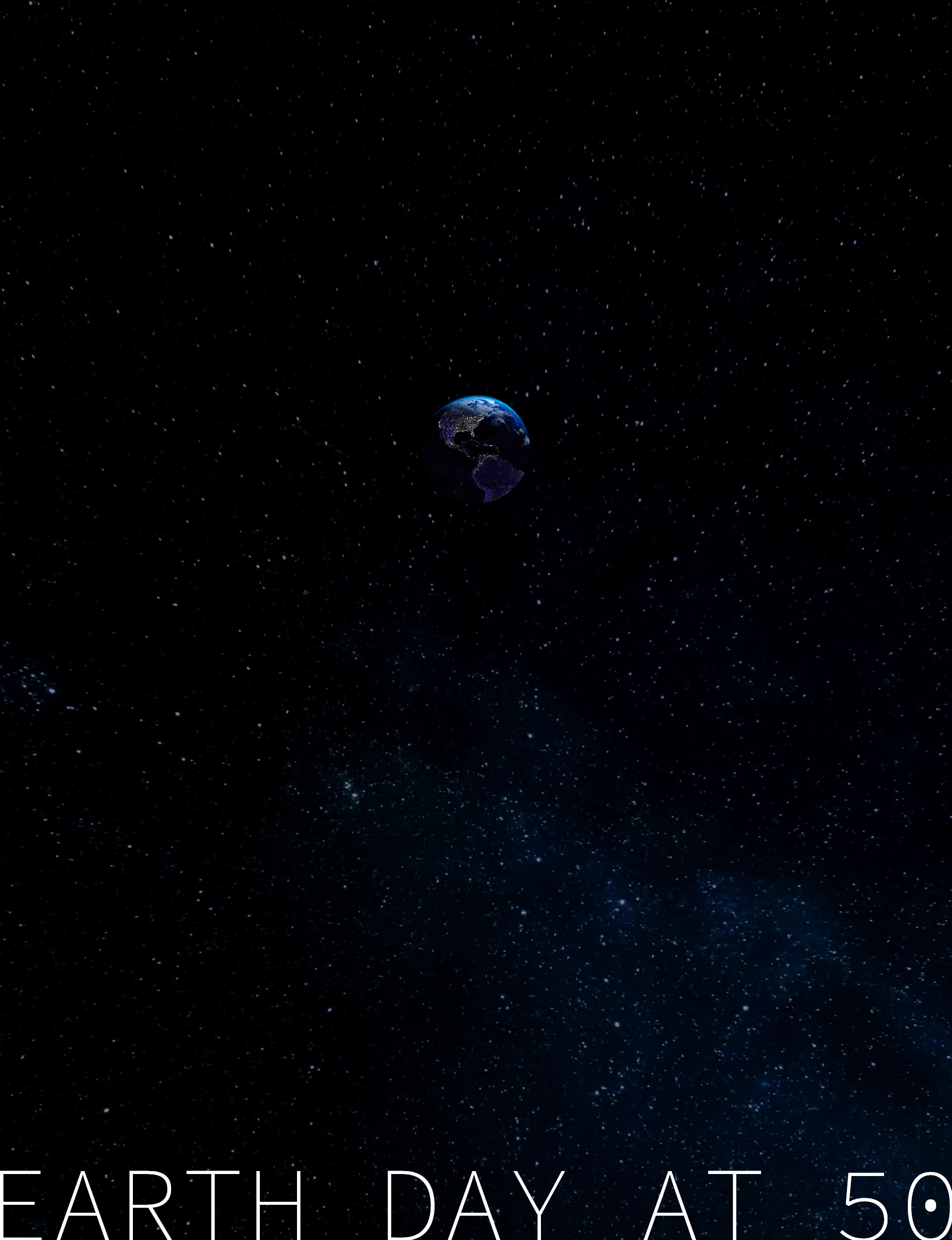
How America Led, Lost and Hopes to Reclaim the Environmental Movement
What do you think of when you think of Earth Day? Is it melting glaciers and greenhouse gases? Hairy armpits and saving the whales? Democrats versus Republicans versus Gen Z?
As it turns out, how you view the biggest day in environmentalism is likely tied to when you were born, something that’s become abundantly clear this year as Earth Day celebrates its milestone 50th anniversary.
Today, Earth Day is recognized as “the largest secular observance in the world.” But what you may not know, or remember, is that it was already a phenomenon when it began back on April 22, 1970.
Despite taking place on a Wednesday, roughly 20 million Americans participated in some way to show support for greater environmental regulations during the inaugural event — a number that constituted a mind-boggling 10 percent of the population at the time.
Even though greater awareness about climate change has led to a resurgence in environmental activism, it’s hard to imagine the country as it existed at the time of the first Earth Day: U.S. Senator Gaylord Nelson, a Democrat from Wisconsin, partnered with Congressman Pete McCloskey, a Republican from California, to kickstart a bipartisan political movement to better the environment, and thus the life of Americans, not with empty platitudes, but through “fundamental changes in the nature of the American economy.”
So what happened to the U.S.? How did we go from leading the planet on the environment to giving up that standing to countries like China and Norway?
In lieu of a time machine to travel through our country’s complicated history with the world around us, we’ve picked 50 of the most momentous events in environmentalism over the last 50 years, from the triumphant to the merely interesting to the downright tragic. We also reached out to environmental champions like author and 350.org founder Bill McKibben, Indigenous leader Winona LaDuke and actor James Cromwell to ask about the specific moments that inspired them to get involved in the fight for a habitable planet for all.
BY ALEX LAUER / APRIL 2020

New Yorkers celebrate the first Earth Day in April 1970.
(Santi Visalli/Getty Images)

1. The National Environmental Policy Act enacted

2. Joni Mitchell Releases “Big Yellow Taxi”
The song appears on her third album, Ladies of the Canyon, and would go on to become an environmental anthem.

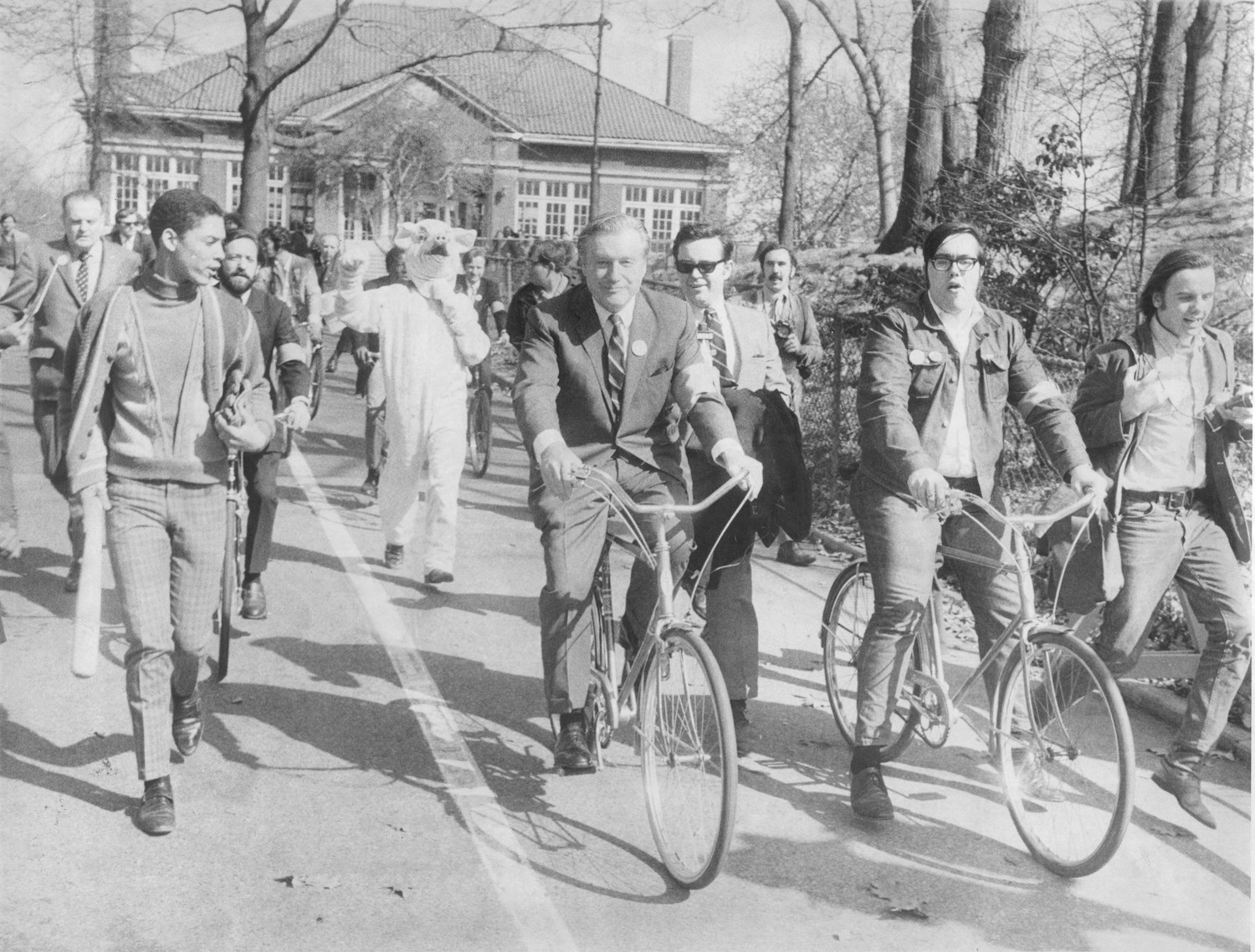
New York Governor Nelson A. Rockefeller rides a bike in Prospect Park, Brooklyn in observance of the first Earth Day. (Vic DeLucia/New York Post Archives / (c) NYP Holdings, Inc. via Getty Images)
3. The first Earth Day
What began as a class project and environmental teach-in became a massive national outpouring of support for greater environmental protections. Estimates put the number of American participants at 20 million, an astounding 10 percent of the population at the time. It wasn’t a homogeneous call to action, either; some people marched, some cleaned up local green spaces, others gathered for concerts. Unlike today’s polarized time, where seemingly every political display is met with some pushback, as The New York Times wrote in the next day’s edition, “If the environment had any enemies they did not make themselves known.”

4. President Richard Nixon establishes the Environmental Protection Agency

5. The modern version of the Clean Air Act is enacted

6. The greenwashing movement begins
“Greenwashing” refers to the practice of corporations misleading the public into believing they are environmentally friendly, and its initiation is often attributed to an ad made by the nonprofit Keep America Beautiful known as the “Crying Indian” featuring an actor with questionable Indigenous heritage. KAB was founded by can and bottle manufacturers, and successfully shifted the blame for environmental destruction from companies to the public by focusing on litter.
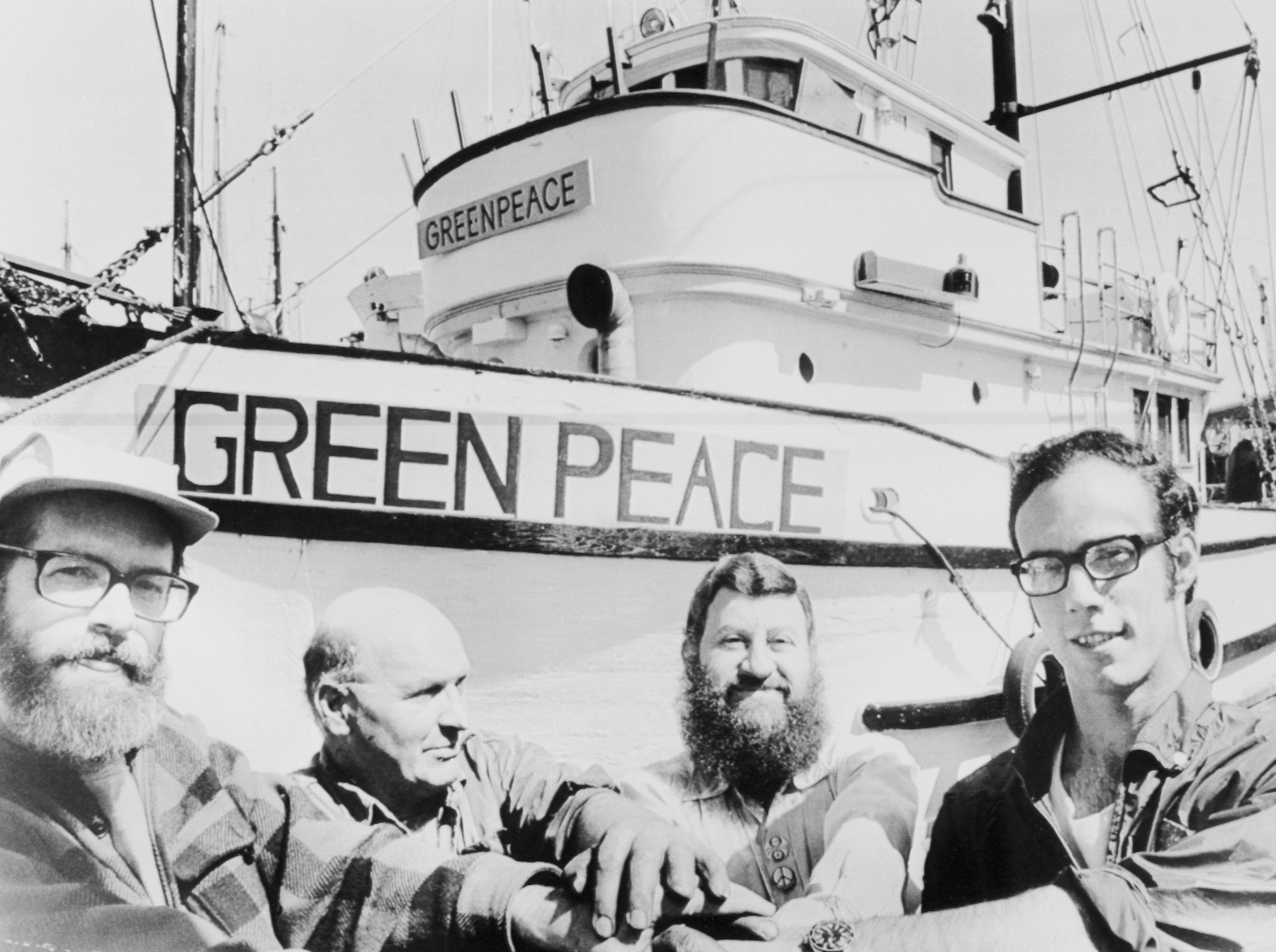
Jim Bohlen, John Cormack, Irving Stowe and Paul Cote (L to R) prior to setting sail for Amchitka Island, after renaming the Phyllis Cormack “Greenpeace.” (Bettmann via Getty)
7. The first Greenpeace protest
Activists sail the ship Phyllis Cormack out to the Aleutian island of Amchitka to protest a U.S. nuclear test. They rename the boat Greenpeace and are arrested by the U.S. Coast Guard, marking the first official protest from the organization.

8. The modern version of the Clean Water Act is enacted

9. Roger Ailes Eco-Musical Opens
Mother Earth, an environmental protest musical, opens on Broadway. It’s produced by … Roger Ailes. Yes, the same Ailes who built Fox News. (He apparently even wrote lyrics for it.) It plays 12 performances before closing.

10. The Endangered Species Act of 1973 is signed into law


James Cromwell in a scene from the 1995 movie “Babe.” (Universal/Getty Images)
11. James Cromwell rides cross country
“In April of ’75, I rode my motorcycle across the country. One day, in Texas, the road bisected a huge stockyard, with cattle in pens on either side of the road, seemingly as far as the eye could see. The horrific stench, the cries of anguish and despair, the omnipresence of death was overwhelming. Obviously I can’t be sure, but I imagined then, this is what it must have been like to drive past, one sunny morning in April, a concentration camp, with its cattle cars, its gas chambers and crematorium, on the road from Krakow to Prague, back in ‘41. You can’t bring yourself to stop. But you never forget.
“I made a vow, right then, I would never again be an accomplice to this inhuman and grotesque carnage. I managed to become a vegetarian, and then, with a lot of help from a little pig with an unprejudiced heart, a vegan. Oh, and I joined PETA. I feel a lot better.
“What I didn’t know then was that animal agriculture is one of the largest contributors to climate change, and that if you really want to be part of the solution, instead of part of the problem, don’t eat animals. Let’s look forward to the day, as Gretchen Wyler so eloquently put it, ‘when animals will have the right to run if they have legs, swim if they have fins, and fly if they have wings.’
“Then, with all your newfound energy and commitment, you can take on the fossil fuel industry, the nuclear industry and the military-industrial complex. Or the establishment as a whole, with its corrupt politicians, soulless oligarchs and complicit corporate media. Racism, sexism, homophobia, xenophobia, classism, prejudice of all sorts. You’ll definitely want to take a look at the root cause of all these evils — rapacious predatory capitalism. That is, if we don’t let them exterminate us all first.
“MLK said, ‘Be the change you want to see in the world.’ Malcom said, ‘Resist!’”
— James Cromwell, actor and activist
12. A Greenpeace mission off the coast of California kickstarts anti-whaling efforts

13. “Exxon Knew”
Exxon senior scientist James Black tells the company, “In the first place, there is general scientific agreement that the most likely manner in which mankind is influencing the global climate is through carbon dioxide release from the burning of fossil fuels.”

14. The God Squad appears
The Endangered Species Act gets a controversial amendment: the creation of the Endangered Species Committee, also known as the “God Squad,” which can allow extinction if certain requirements are met.
15. President Jimmy Carter declares Love Canal toxic dump a federal health emergency


A cow grazes in front of Three Mile Island nuclear power plant after the meltdown. (Bettmann/Getty)
16. The Three Mile Island Incident
The nuclear reactor meltdown in Pennsylvania becomes a flashpoint for the controversial energy source, an issue that remains divisive to this day.

Kenyan President Daniel Arap Moi sets fire to confiscated elephant tusks worth $3 million U.S. dollars in 1989. (Tom Stoddart/Getty Images)
17. The first wind farm in the U.S. goes up in New Hampshire
18. The Superfund Law is enacted
Also known as the Comprehensive Environmental Response, Compensation, and Liability Act, it recognizes the need to clean up contaminated sites across the country.

19. President Ronald Reagan takes office
He removes the solar panels installed on the White House by former President Carter, thinking they were “just a joke,” according to a top official.


Reverend Joseph Lowery of Atlanta (center), who heads the Southern Christian Leadership Conference founded by the late Dr. Martin Luther King, Jr., leads a protest against a toxic waste dump in Warren County. (Bettmann/Getty)
20. The term “Environmental Racism” is coined
A group of black Americans in Warren County, North Carolina lead the protest of a PCB landfill, kicking off the idea of “environmental racism” as well as “environmental justice.”

21. Establishment of the Intergovernmental Panel on Climate Change
U.S. plays a leading role in the creation of the United Nations body.
22. Jim Hansen testifies before Congress
“Jim Hansen’s testimony before Congress in June of 1988 that global warming was already underway was kind of the starting gun for what’s turned into my life’s work — taking that remarkable science and trying to turn it into action.”
— Bill McKibben, writer, environmentalist and founder of 350.org

23. The Exxon Valdez oil spill in Prince William Sound, Alaska
24. The ivory burn seen around the world
“As a student in the late 1980s, I was struck by the burning of piles of ivory (elephant tusks) poached from elephants in Kenya. It was a shocking image to see on TV, and the first time I heard of someone referred to as a conservationist. Richard Leakey, who had been made the head of Kenya’s Wildlife Conservation and Management Department, had the guts to burn the ivory instead of selling it to finance conservation. It was inspiring to see someone be so bold, and inspired me to the idea that regular people, like me, and public opinion could influence governments and policies to protect species.”
— Carmen Revenga, Sustainable Fisheries Strategy Lead, Global Oceans Team at The Nature Conservancy

(Penguin Random House)
25. Bill McKibben publishes The End of Nature

The 25th anniversary of Earth Day in Washington, D.C. (Jeffrey Markowitz/Sygma via Getty Images)

26. The first episode of Captain Planet and the Planeteers airs
27. The 20th anniversary of Earth Day reignites the movement, which spreads around the entire globe


(Keri Pickett)
28. Winona LaDuke founds Honor The Earth
“Being born Anishinaabe was my awakening to consciousness.”
— Winona LaDuke, Indigenous author, activist and speaker
In 1993, LaDuke founds Native environmental justice nonprofit Honor The Earth, of which she is currently Executive Director. She goes on to run as the vice presidential candidate for the Green Party alongside Ralph Nader in 1996 and 2000.

29. Former Senator Gaylord Nelson receives the Presidential Medal of Freedom, the highest civilian honor, from Bill Clinton


Natalie Dawson (Photo courtesy of Audubon Alaska)
30. Bill McDonough develops “Cradle to Cradle” manufacturing
“I grew up in Detroit, Michigan, on the shores of the most polluted river in the early 1980s, the Rouge River. It was the dumping site for industrial waste from a Ford automotive factory. My dad studied architecture, and we went to hear a speech by Bill McDonough, one of the creators of the manufacturing concept ‘Cradle to Cradle’ and the start of the zero-waste movement. McDonough would go on to build a green roof and filtration system for the Ford plant that turned it from polluter to clean-water generator. Birds, bugs and frogs came back to our yard and creek. I learned to appreciate the action of thoughtful, creative, visionary and risky leaders in the face of immense challenges. It made me want to take action and think big about what we can all do to clean up our environments, at the local or global scale. It also made me love clear, clean water, something I will never take for granted.”
— Natalie Dawson, PhD., VP and Executive Director at Audubon Alaska

Al Gore (L) and Rajendra Pachauri, then chairman of the Intergovernmental Panel on Climate Change, during the Nobel ceremony in Oslo in December 2007.
(SIGURDSON, BJORN/AFP via Getty)

31. The Toyota Prius debuts worldwide

32. President Clinton issues Roadless Rule
As one of his final acts, Clinton establishes the Roadless Area Conservation Policy, which prohibits road construction and logging on 58.5 million acres in the National Forest System. While it was popular with the country at large, certain states and extraction industries fight it to this day.

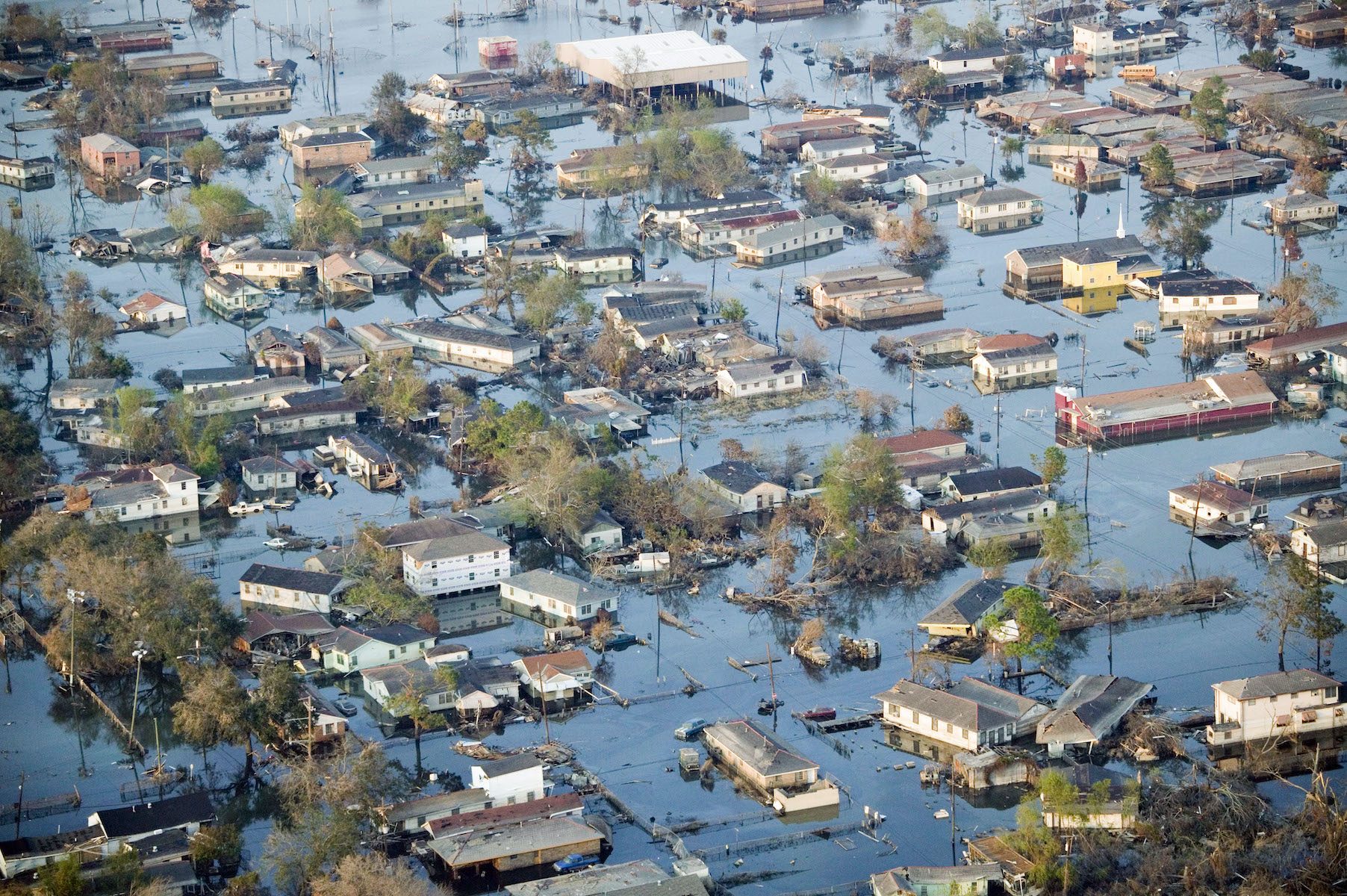
The neighborhood of Chalmette sits underwater after Hurricane Katrina on September 11, 2005 in St Bernard Parish, New Orleans, Louisiana. (Jerry Grayson/Helifilms Australia PTY Ltd/Getty Images)
33. Hurricane Katrina strikes
One of the worst hurricanes in U.S. history leads to increasing concerns about the effects of climate change on weather.

34. An Inconvenient Truth hits theaters
Former Vice President Al Gore goes on to win the Nobel Peace Prize the next year (along with the Intergovernmental Panel on Climate Change).

35. Vijay Limaye gets a kidney stone
“An event that motivated me to pursue a career in environment and public health work was in 2006, when I spent a summer as an undergraduate research intern at the University of Texas-Austin. Growing up in Wisconsin, I had never experienced searing heat like that, for months on end. Because of that experience, I became more interested in understanding the health impacts of climate change on communities here in the U.S. but also in some of the most vulnerable places around the world. I actually came down with a painful kidney stone that summer, in part due to chronic dehydration that sent me to the emergency room. Having an up-close experience with extreme heat was really powerful in motivating me to pursue work to address climate change as a major threat to public health.”
— Vijay Limaye, Climate Change and Health Science Fellow, Natural Resources Defense Council

36. Thomas L. Friedman proposes a “Green New Deal” in The New York Times
37. The bald eagle is removed from the list of endangered species

Members of the Colorado River Tribes hold a banner to show their support for Native Americans of the Standing Rock reservation who oppose the construction of the Dakota Access Pipeline. (ROBYN BECK/AFP via Getty)

38. The Deepwater Horizon oil spill
“Spill” is a misnomer. “Disaster” is more accurate. Beginning on April 20, BP’s oil continues flowing into the ocean until almost five months later. The effects are still being determined, as are the ways to continue offshore drilling.


Susan Culliney (Photo courtesy of Audubon Alaska)
39. Susan Culliney becomes an advocate for birds
“My master’s thesis involved studying the ‘Alala (Hawaiian Crows) and how they disperse seeds of native Hawaiian fruiting plants. One day I was collecting digested seeds from captive ‘Alala (yes, I was picking up bird poop with seeds in it) and I realized that the conservation of this bird didn’t rely all that much on biology. We had most of the biological information we needed. Instead, this bird’s long-term survival relied on our policy choices as humans and the application of the biological information to environmental laws like the Endangered Species Act. So, I finished my thesis, went to law school and ended up in public policy advocating for birds and the conservation tools they need.”
— Susan Culliney, Policy Director at Audubon Alaska

(Photo courtesy of Ivy Jaguzny)
40. Flooding in the Puget Sound
“I grew up on a small rural island in Washington and I started to notice the effects of rising sea levels. At high tides, the Puget Sound sometimes washed over the bulkhead into our basement, turning our tiny lawn into a warzone of dead jellyfish. As a kid, it looked unnatural, like an apocalyptic scene from a sci-fi movie, and I felt that something was deeply wrong. It was then I became aware that climate change was not some distant future threat. It was happening now right in front of my eyes.”
— Ivy Jaguzny, Press Lead at Zero Hour


(Macmillan)
41. Elizabeth Kobert publishes The Sixth Extinction: An Unnatural History
The landmark nonfiction book goes on to win the Pulitzer Prize.
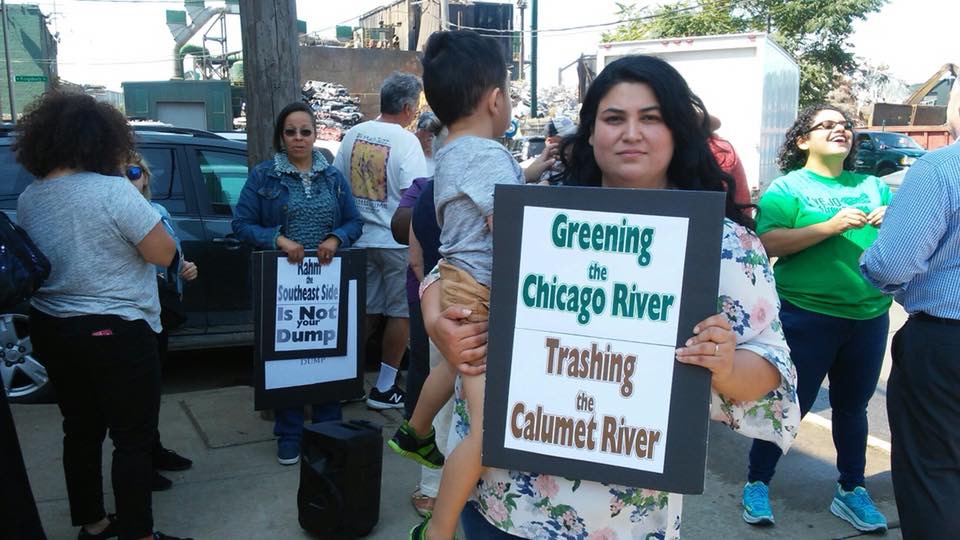
Gina Ramirez (Photo courtesy of Natural Resources Defense Council)
42. Gina Ramirez fights the petcoke ashheaps
“In 2014, I was pregnant and very excited about this life-changing moment. It was also the same time that I noticed seven-story piles of black dust in my neighborhood. I later found out that toxic dust was petcoke, a byproduct of the oil refining process. I was terrified knowing that I was going to bring a new life into this very polluted community. With the help of my friends and neighbors and a long, hard fight we rallied together and were successful in getting rid of the piles of petcoke. I knew from that point on that I would dedicate my life to cleaning up other neighborhoods just like mine.”
— Gina Ramirez, Midwest Outreach Manager, Natural Resources Defense Council

43. The first climate refugees in the U.S.
The Department of Housing and Urban Development issues first grant “to move an entire community struggling with the impacts of climate change,” as reported by The New York Times. That community is Isle de Jean Charles, Louisiana.

Native American protestors and their supporters are confronted by security during a demonstration against the Dakota Access Pipeline oil pipeline, near Cannon Ball, North Dakota, September 3, 2016.
(ROBYN BECK/AFP via Getty Images)
44. The #NoDAPL protests
Sacred Stone Camp is established by the Standing Rock Sioux Tribe, officially kicking off the Dakota Access Pipeline protests.

45. Sunrise Movement launches as a nonprofit in Washington, D.C.

46. Hurricane Irma
“When I first moved to the D.C. area school that would later shape my climate activism, a terrible hurricane hit my hometown in Florida (where my family had immigrated to). It was my first time away from home for more than a few days and now my family could be in danger and I had no way of contacting them as power went out across the city. My sister’s school was canceled for weeks and some local universities didn’t come back for months. In this situation, I also saw the inequality of environmental and climate crises again as more affluent neighborhoods never lost power or were at much risk and lower-income areas had to rebuild from the hurricane for many months.”
— Lana Weidgenant, Deputy Director at Zero Hour
47. President Donald Trump announces U.S. withdrawal from Paris Climate Agreement


48. Zero Hour Youth Climate March
“Growing up, it was hard for me to connect to the environmental movement. Everything I heard either seemed too abstract or inapplicable to my life — from seemingly fictitious polar bears to the warming of Earth. I had a hard time connecting with what I understood to be the environmental issues we are facing. My senior year of high school, I was introduced to Zero Hour. A friend of mine wanted me to help them put on a Youth Climate March in Atlanta that summer. I wasn’t sure what Zero Hour was about, so I started reading their platform and different media articles about them and learning about the tangible ways climate change and global warming were affecting communities, like my own, at disproportionate rates. So many issues that I had already identified to affect our communities had a deep-rooted thread to environmental issues and I was shocked. From there, I seriously began to educate myself on the climate crisis, agreed to help organize the Atlanta Youth Climate March, and joined This is Zero Hour!”
— Andrea Manning, Deputy Music Director at Zero Hour

49. Congresswoman Alexandria Ocasio-Cortez and Senator Edward Markey release joint Green New Deal resolution
50. Global Climate Strike
A week of protests from September 20 to 29, organized chiefly by high school and college students, becomes the largest climate action of its kind in history. While the first Earth Day technically had more participants, many were participating passively, whereas this was a dedicated strike calling for specific actions to be taken to stem the ongoing climate crisis.
Thanks for reading InsideHook.
Sign up for our daily newsletter to get more stories just like this.